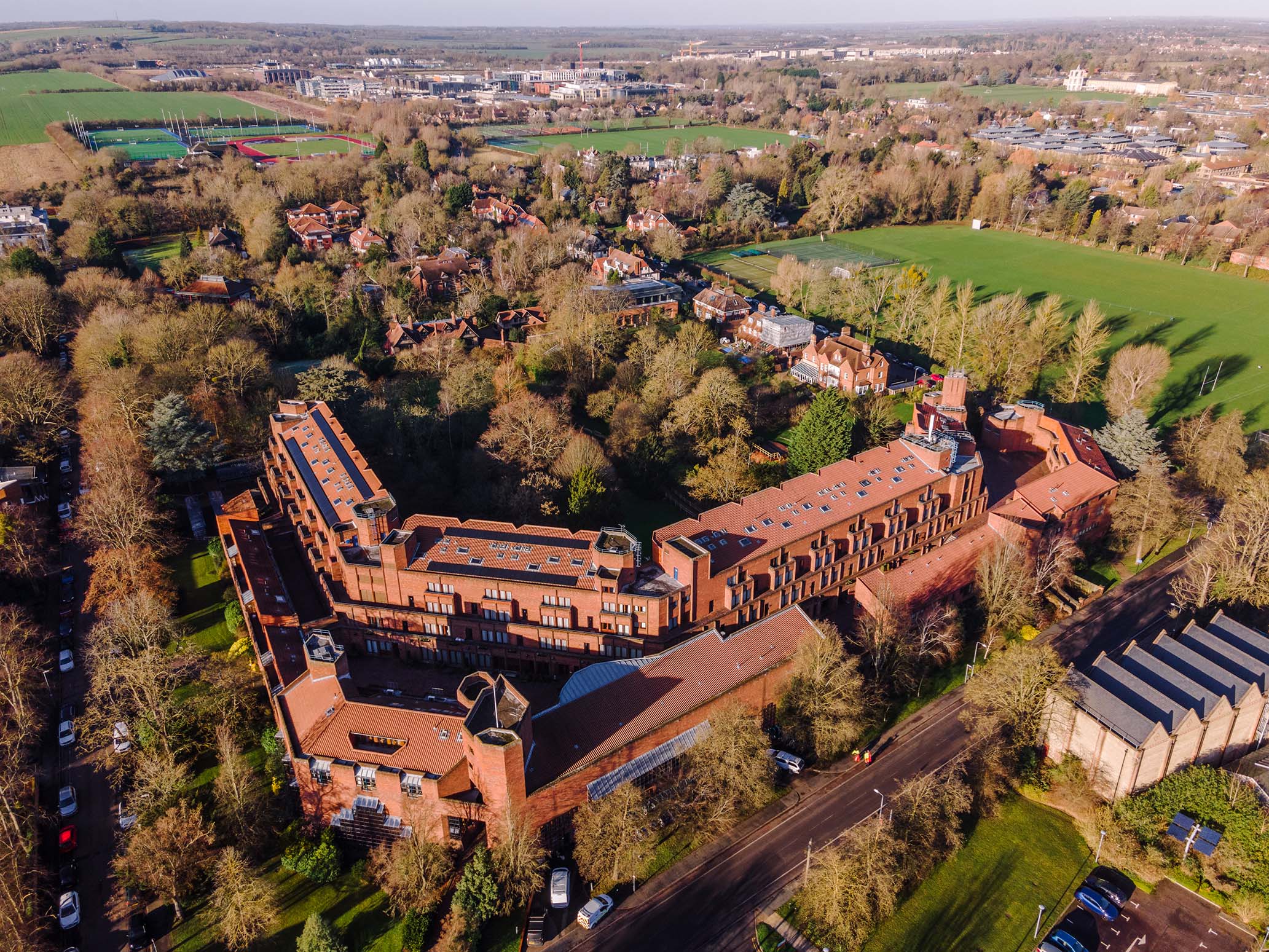Robinson College in Cambridge Listed
Robinson College, Cambridge has been listed at Grade II* by the Department for Digital, Culture, Media and Sport (DCMS) on the advice of Historic England. Built between 1977 and 1980, it was Cambridge’s first purpose-built, co-educational college, and the last college to be established at the University of Cambridge.
Funding for the new college had been given by David Robinson (1904-1987). Born in the city and educated at Cambridge High School for Boys, he made his wealth renting televisions and radios under the name Robinson Rentals, as well as from his major contribution to British horse racing. He funded many philanthropic schemes, including the unprecedented donation of £18,000,000 to aid the creation of Robinson College.
Ten practices were invited to compete in a limited competition for the design of the college. The winners were the Glasgow-based architectural practice of Gillespie, Kidd & Coia (GK&C).
They were the only practice whose scheme proposed to preserve most of the Edwardian gardens in the college’s chosen location on Grange Road in Cambridge. The new college buildings - covered with approximately 1.4 million handmade bricks - were concentrated in megastructures that followed the boundary of the site, in order to incorporate the existing gardens.
Construction of the college began in 1977 and the buildings began to be occupied in July 1980. The college was formally opened by HM The Queen in early 1981, and it was recognised by the Royal Institute of British Architects with their Eastern Award in 1983.
This news is a significant milestone for Robinson College and for Cambridge University. Since Queen Elizabeth II opened the College in 1981, some 5,000 students have lived and studied here. They have enjoyed a modern, open and welcoming building, set in beautiful gardens that have grown and matured with the College. We are immensely proud that the listing recognises the particular contribution that our red-brick College makes to Cambridge's architectural and cultural heritage. I am especially pleased that the report draws attention to the superb architectural quality of our Chapel and our Library. Robinson has earned its status as an exceptional and distinctive College in the Cambridge tradition. The Listing of our building is a celebration of that.
The original ranges of the college have changed little since the time of its completion. The principal entrance is through the ramped gatehouse that houses the porters’ lodge. A number of courts lie between inhabited walls of raked accommodation and connect to the principal communal spaces, including the fine library, chapel and auditoria.
Domestic accommodation is all arranged around staircases in a traditional collegiate fashion, but connected upper balconies and bridges provide for horizontal communication. Some services which still survive would have been unusual as purpose-built facilities in a Cambridge college: a music suite with dedicated record library and hi-fi room, and a photographers’ dark room.
These beautifully designed buildings are an important example of post-war college design and a striking addition to eight centuries of college construction within the University of Cambridge. The artistic interiors of the Chapel and the Library are particularly remarkable. The College, with its distinctive red brick exteriors, is a stunning city landmark.





